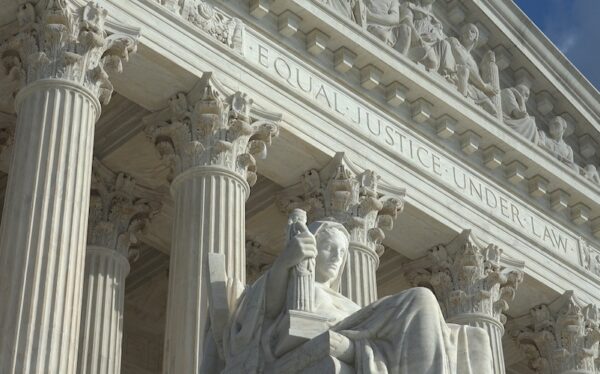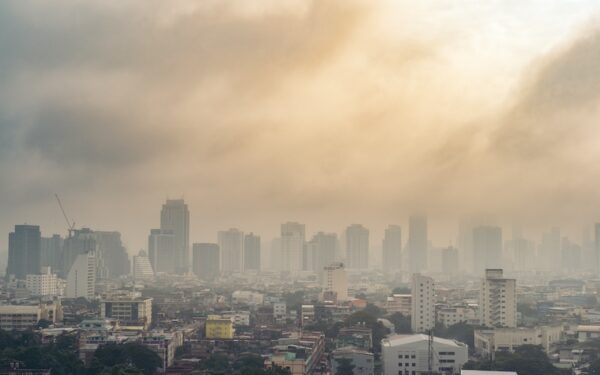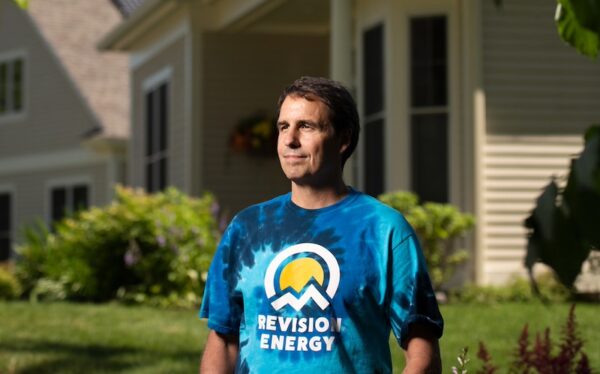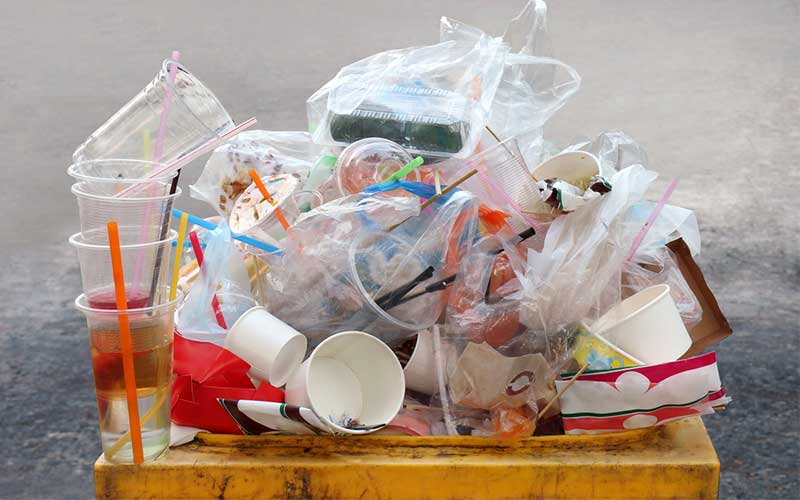
Plastic contaminates at every stage – from production to disposal. Environmental advocates now call this process the Plastic “Death” Cycle because of how harmful plastic is to our health and planet. Photo: By DeawSS via Shutterstock
Plastic is everywhere – even in the places you’d least expect, like chewing gum, tea bags, wet wipes, receipts, coffee cups, and microwaveable popcorn bags. Think about that for a minute. Everywhere we go, plastic surround us – a material we know threatens our health and environment. Though manufacturers continue to make more and more plastic each year, the way plastic is made fuels a toxic cycle of production, consumption, and disposal.
In fact, global plastic production is increasing drastically – up from 1.5 million metric tons in 1950 to about 367 million metric tons in 2020.
We can only stop this toxic waste crisis from getting worse by breaking the cycle of plastic pollution once and for all. That starts with understanding how plastic is made in the first place.
Fracking, Cracking, and Nurdles…Oh My! Here’s How Plastic is Made
At its core, plastic is dirty, polluting fossil fuels. But just how is plastic made using these crude substances? And why are these materials so dangerous for our health and the environment?
Extraction: Fossil fuel companies remove coal, crude oil, and natural gas from the earth by way of large-scale mining and drilling operations. This includes the dangerous drilling technique known as fracking.
The Impact: Digging deep into the earth damages the soil and land – and makes the general area more susceptible to natural disasters like mudslides and flash floods. Plus, extraction companies usually dump all the rock and soil they dig up into nearby waterways and ravines, which interrupts water flow and disturbs surrounding ecosystems. And fracking leaves behind a lagoon of liquid containing radioactive material, heavy metals, and other toxics. If that weren’t bad enough, extraction releases toxic chemicals into the air. If workers and nearby communities inhale or ingest them, it can lead to a slew of health issues, including cancer.
Refinement and Cracking: Refinery plants process fossil fuels to obtain the chemical compounds (ethane and propane) needed for plastic production. A technique called “cracking” then breaks down the complex molecules that make up ethane and propane – turning them into smaller, lighter, and more widely functioning compounds known as ethylene and propylene.
The Impact: Refinery and cracking plants are highly hazardous – releasing countless toxic chemicals into the air that negatively affect our climate and health. The country’s largest petrochemical refinery plant is in Houston, Texas. And, unfortunately, the facility has taken its toll on neighboring communities.
Processing and Manufacturing: Ethylene and propylene are modified with a number of chemical additives to produce various types of resin, which, in turn is molded into lentil-sized plastic “nurdles” (or pellets). Manufacturers across the globe melt the plastic nurdles down to create every single plastic product you can imagine – that’s how plastic is made.
The Impact: Plastic processing and manufacturing discharge extremely toxic substances into the air, which impacts the Earth’s climate and can lead to severe health impacts. On top of that, many plastic “nurdles” escape from these facilities and make their way into our waterways and ocean – where they put marine life and ecosystems in jeopardy.
How Plastic is Made Causes a Plastic “Death” Cycle
How plastic is made clearly endangers our health and the environment. But the threat doesn’t end there. Plastic contaminates at every stage – from production to disposal. Environmental advocates now call this process the Plastic “Death” Cycle (rather than “lifecycle”) because of how harmful plastic is to our health and planet.
Here’s a breakdown of that cycle and the risks that come with each stage:
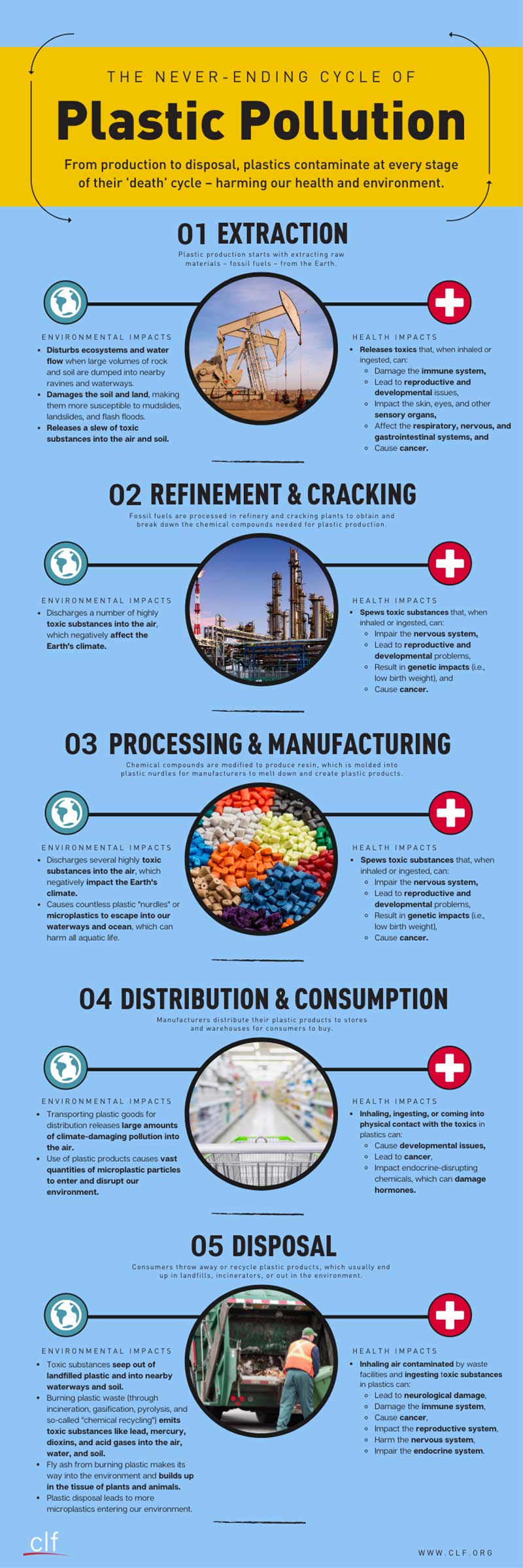
Even after plastic has been molded into packaging or a product, transporting those goods for distribution spews climate-damaging emissions into the air. Using these products cause microplastics to enter and disturb the environment. And eating or drinking out of plastic containers can lead us to ingest harmful chemicals. What’s more, our dirty disposal methods result in vast amounts of plastic in our communities and our ocean.
While the flood of single-use plastic littering our planet has gained attention in recent years, this debris only scratches the surface of the problem. The truth is, we recycle very little plastic. In fact, only 8% of the 35,680 tons of plastic generated in the U.S. in 2018 was recycled that same year. And where did the rest of that plastic go? Well, 75% went to landfills, which produce toxic garbage juice that seeps into the groundwater, and 16% was burned in incinerators, which release toxic pollution into the air.
Solutions to Plastic Pollution
Our recycling system can’t handle the sheer variety of plastic – meaning we can’t recycle our way out of the plastic pollution problem. So, we need to look to alternative solutions that take plastic out of the equation.
People around New England and across the globe are fighting back against the plastic crisis – and gaining ground. Just in the last few years, we’ve seen:
- Cities and towns across New England ban several single-use plastics,
- Businesses move towards reuse and refill systems – cutting out plastic altogether,
- Community members advocate for change in their own hometowns (and succeed),
- And legislation holding plastic producers accountable for the waste they create. In fact, Maine made history in signing the country’s first producer responsibility for packaging bill into law. And nearly a dozen states introduced similar laws this year – including Vermont and Massachusetts.
Breaking the Cycle of Plastic Pollution
How plastic is made takes a lot of time, energy, and money. Yet, the petrochemical industry continues digging up the earth’s fossil fuels only for manufacturers to create products we typically use once before throwing them away (not to mention the packaging for those products). And all the while, the ongoing cycle of plastic production, consumption, and disposal, threatens our health and environment.
We need to end the untenable cycle that is plastic pollution. And we can do that by redesigning our products to use more sustainable materials, rethinking our waste management systems, and holding producers accountable for the plastic waste they create. These Zero Waste solutions are already in effect across the globe – and they work.
But we can’t do this alone. Your voice and support make a huge difference. Call on your legislators to ban single-use plastic in your state and help us break free from plastic.


